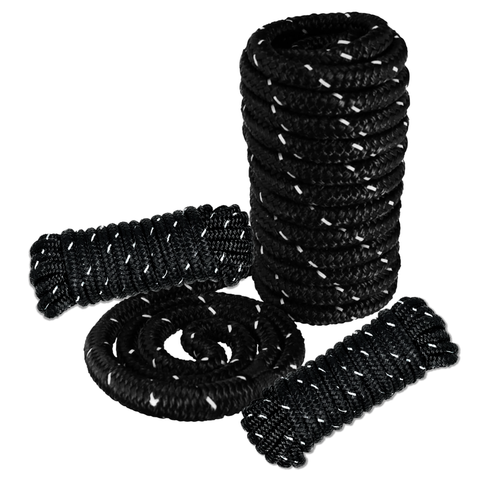
How to Pick Boat Fenders
How do you pick the right boat fenders for protection?
In this article, we discuss what makes an effective boat fender to prevent potential damages to your boat.
Boat Fender Sizes

When getting boat fenders, you have to look at the fender diameter and select a fender that has approximately one inch of diameter for every five feet of boat length.
For example, if you have a boat fender that’s six inches in diameter, it’s compatible for boats that are around 20-25 feet long. Another thing to remember is the larger your boat is, the more boat fenders you need.
Boat Fender Air Pressure

When putting air pressure into your boat fenders, it must be strong enough to repel or bounce off incoming impact but still soft enough to “squish in” when you touch your boat fenders’ surface.
To attain the adequate level of resiliency on your boat fenders, they must contain an air pressure of about 2.9 Pounds per Square Inch (PSI).
Boat Fender Types

Boat fender types vary depending on how you’ll be using them. Some are meant for greater resiliency against impact while others are made for wider area of coverage.
Some boat fender types are:
- Typical Fenders – can be hung vertically or horizontally. The inflation valve on top is where you input the right amount of air pressure to protect your boat.
- Tubular Fenders – have holes in the center where you can insert a line without having to worry that you may accidentally pull it out.
- Bean-shaped Fenders – Address the issue on height and give your boat the necessary protection up to the railing part.
- Spherical Fenders – Either you insert an inflation needle directly into the eyelets or remove them first with a Philips bit, then use an air compressor.
For more information on this matter, visit West Marine’s Channel.
Boat Fender Installation

Boat fender installation relies on your boat size and the height of the dock. Traditionally, boat fenders are tied around a cleat but they can also be put on the low-level railing to give them ample space for swinging.
This is because if boat fenders are moved to the high-level railing, they have a tendency of swinging wildly and getting stuck on top where they can’t properly protect your boat.
Tying Boat Fender to Cleat

In tying your boat fenders to a cleat, all you have to do is insert the rope into the cleat’s center. Lift the other end of the rope and loop its left side. Then, secure it in place with two tiny hitches or knots.
Tying Boat Fender to Rail

This style lets you put the rope along the rail. Afterwards, grab the rope with your right hand and leave the other end open in such a way that it lets you twist a loop. Then, go under the railing and twist the rope again so that when you pull it, it automatically creates tension to hold your boat fenders.
Conclusion
Getting the right boat fenders based on the above considerations helps you protect your boat against damages caused by unexpected bumps on the docks or moors, and fellow sailors. Just make sure that you place them on boat areas that are susceptible to more than scratches for them to serve their pu



